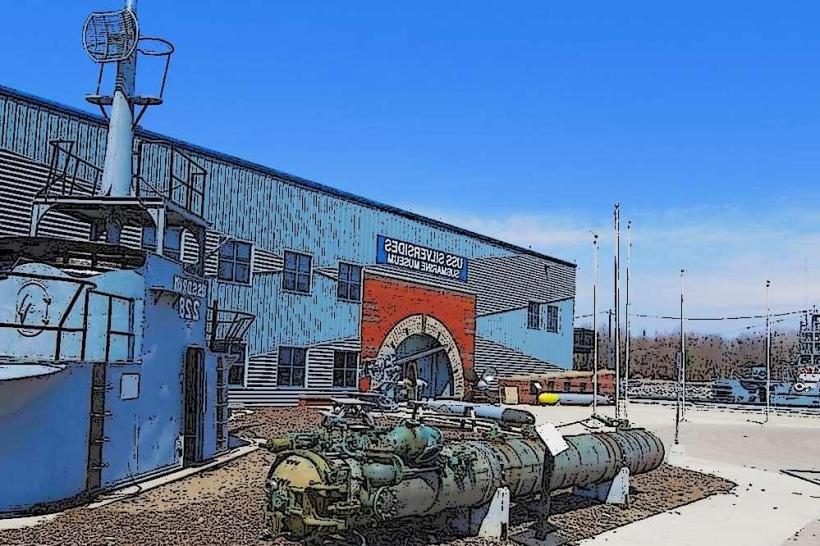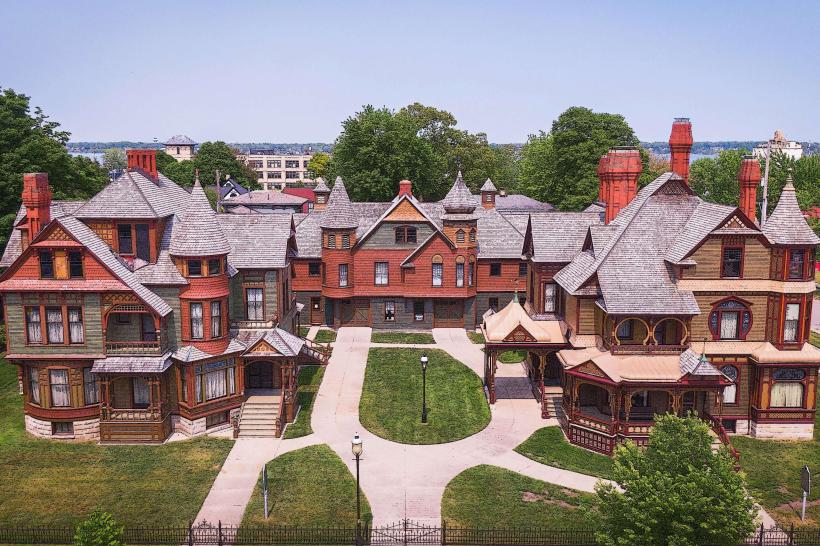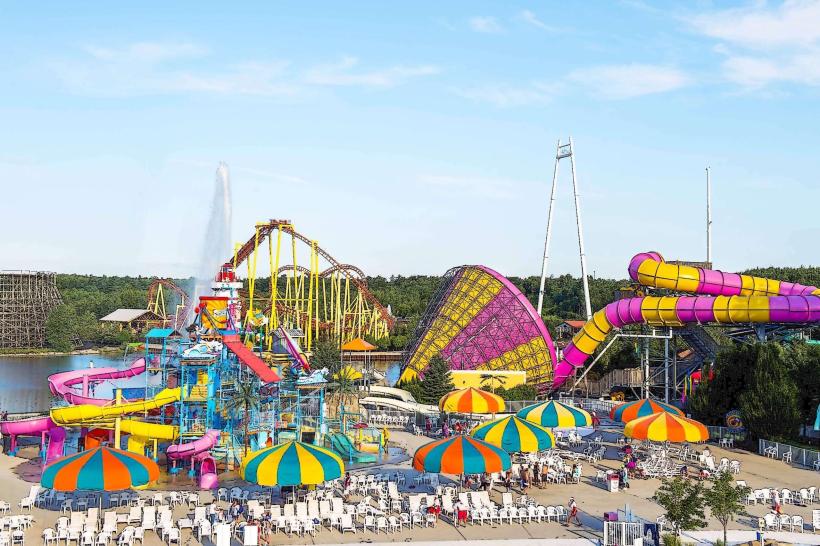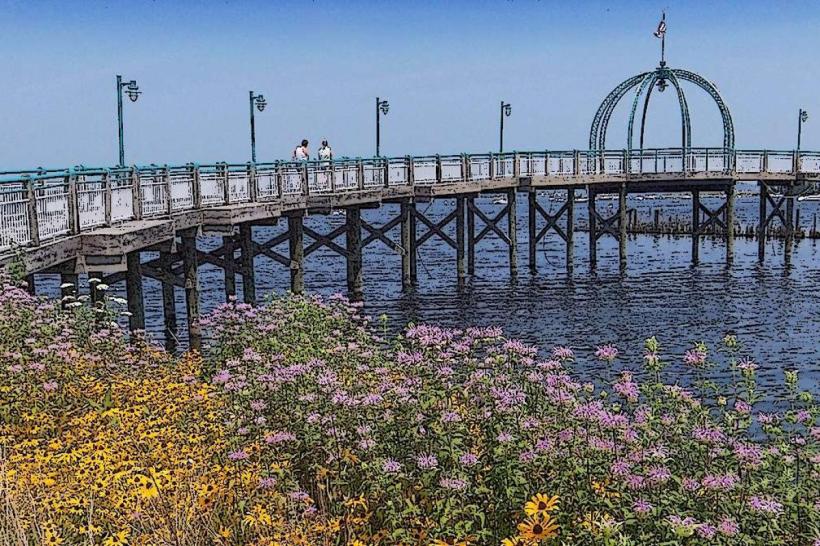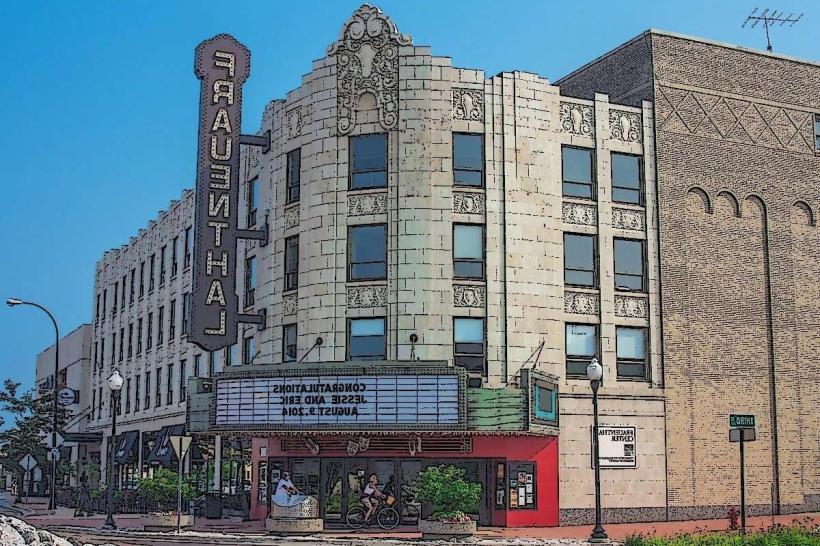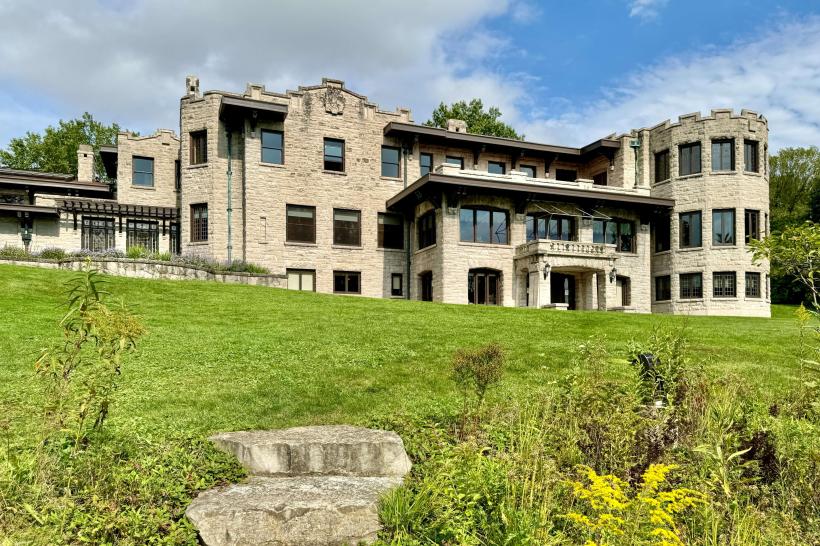Information
Landmark: Muskegon Museum of ArtCity: Muskegon
Country: USA Michigan
Continent: North America
Muskegon Museum of Art, Muskegon, USA Michigan, North America
Overview
In Muskegon, Michigan, the Muskegon Museum of Art stands at the heart of the city’s cultural life, drawing visitors with its wide-ranging art collection, hands-on educational programs, and a steady push to champion visual arts across the Midwest-right down to the vivid brushstrokes of a local painter’s lakefront scene, therefore in 1912, thanks to a generous bequest from Charles Hackley-a well-known local lumber baron-the museum opened its doors as the Hackley Art Gallery, its wood-paneled halls echoing with the scent of newly varnished floors.Over the years, it’s evolved into a vibrant museum that hosts everything from rotating art shows to hands-on workshops, welcoming both neighbors and travelers alike, and the museum traces its roots to Charles Hackley’s generosity, a man who poured his wealth into the arts so his neighbors could enjoy music, paintings, and the quiet beauty they bring.At first, the collection showcased fine art by American and European painters, a deliberate nod to cultural enrichment that balanced the clang and bustle of Muskegon’s industrial rise, as a result as the museum grew, it started collecting pieces from a wider range of artistic movements and media-like vivid street murals alongside delicate bronze sculptures-showing both the shift in artistic trends and its dedication to diversity and inclusion.The Muskegon Museum of Art sits in a sleek, modern building at 296 West Webster Avenue, right in the heart of downtown Muskegon, and the building has been transformed over the years, with radiant current galleries and wider halls that make visits more enjoyable while giving the expanding collection room to breathe.Honestly, One standout change lately is the Bennett-Schmidt Pavilion, which swung its doors open in early 2025 after a $15.4 million expansion, in turn the novel pavilion nearly doubles the museum’s exhibition space, adding sleek, state-of-the-art galleries and luminous classrooms where you can almost smell fresh paint.The pavilion houses four fresh galleries, including a spacious 5,000-square-foot hall built to showcase major traveling exhibitions and massive, commanding works, consequently it’s got two dedicated education studios where you can roll up your sleeves for hands-on learning, dive into workshops, or join lively community programs.One standout feature is the recent open-storage area, where visitors can peer through glass to behold pieces normally kept out of sight, inviting a clearer, more personal connection to the museum’s collection, as well as the expansion adds a modern museum store and the Howmet Sculpture Park, an open-air space where towering sculptures rise against the sky, enriching the museum’s grounds and giving room for large-scale works to breathe.The MMA’s permanent collection bursts with variety, holding more than 5,500 works-from delicate ink sketches to glowing oil paintings, as a result it’s especially famous for its American art collection, featuring standout pieces by artists who’ve helped shape the story of the nation-like a weathered landscape that still smells faintly of oil paint.Among the highlights are Edward Hopper’s moody *modern York Restaurant*, where a lone diner sits bathed in the glow of a streetlamp, and John Steuart Curry’s *Tornado Over Kansas*, a tense, sweeping portrait of nature’s raw force in the Midwest, not only that the museum features an impressive collection of studio glass art, a rare and specialized form that catches the light like molten color frozen in motion.As far as I can tell, The collection showcases pieces from celebrated glass artists, including Dale Chihuly, famous for his twisting, kaleidoscopic sculptures, and Debora Moore, who crafts delicate works inspired by the shapes and colors of living plants, alternatively the collection also features Elizabeth Catlett, celebrated for powerful works that delve into African American identity and social justice, and Andrea Kowch, whose modern paintings blend surreal dreamscapes with the quiet charm of rural American life.As it turns out, At the MMA, championing underrepresented voices in art isn’t just a goal-it’s what they do, as seen in exhibitions like *Transcending Tradition: Selection of Works from The Bennett Collection of Women Realists*, where more than 150 pieces by women artists fill the galleries, expanding how we notice the story of gender and creativity, therefore the museum’s permanent collection anchors a lively calendar of temporary and traveling exhibitions, with novel displays arriving like fresh canvases on the walls every season.Actually, Current and upcoming exhibitions span everything from immersive experiences like *Julia Child: A Recipe for Life*, where the scent of fresh-baked bread lingers in the air, to lively dives into pop culture with displays on comics and Disney, not only that special exhibitions spotlight women artists, celebrating inclusivity and honoring the wide range of voices that shape the art world-like a vibrant gallery wall filled with contrasting colors and styles.From what I can see, The museum’s mission revolves around education, from guiding school groups past ancient pottery to hosting evening lectures, after that the MMA offers a wide range of programs that draw in people of every age and skill level, from kids painting their first canvas to seniors exploring recent techniques.Frankly, For people facing memory loss-and those who care for them-SPARK, alternatively offers moments that light up an afternoon, like a smile breaking across a familiar face.Memory Care Tours create personalized experiences that spark connection through art, whether it’s painting dazzling strokes on canvas or shaping clay, all within a warm and welcoming space, consequently programs like Art Avenues link art to a range of learning styles, making it both accessible and meaningful-whether it’s a hands-on clay project or a quiet moment studying color theory.Family programs like Super Saturday offer free entry and hands-on activities, inviting kids and parents to explore art side by side in a space that feels warm and open, simultaneously the museum is woven into Muskegon’s daily life, hosting lively public events, intimate artist talks, hands-on workshops, and outreach programs that draw residents closer to the arts-sometimes over the warm scent of fresh paint in a studio, occasionally Thanks to local sponsors, the museum throws open its doors for free every Thursday and on the second Saturday of each month, making sure cost isn’t a hurdle and more people can enjoy its art and history-like the smell of classical wood in the maritime gallery, simultaneously you’ll find the Muskegon Museum of Art right in the heart of downtown, with parking close by and wide, easy-to-open doors that make it a breeze for visitors with mobility challenges to enjoy.Just outside the museum, cafés smell of fresh coffee, shops line the streets, and other attractions draw people in, weaving the urban neighborhood into the heart of Muskegon’s cultural and social life, as a result in short, the Muskegon Museum of Art keeps growing and changing, acting as a steady cultural anchor for the community-much like the warm glow of its gallery lights on a winter evening.With its striking American art collection, warm focus on education and inclusivity, and the fresh space of the Bennett-Schmidt Pavilion, it’s earned a solid venue among the region’s top museums, equally important at the MMA, visitors take in striking works of art while joining programs that link each piece to personal memories and neighborhood histories, making the museum a lively hub for cultural growth and lifelong learning., kind of
Author: Tourist Landmarks
Date: 2025-10-04


